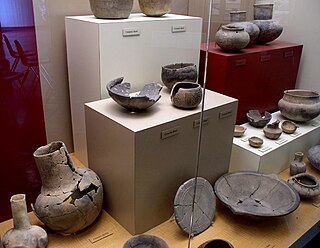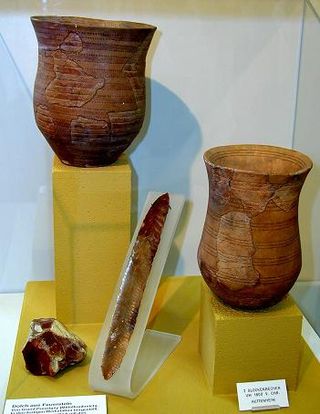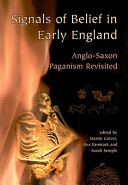
Processual archaeology is a form of archaeological theory that had its beginnings in 1958 with the work of Gordon Willey and Philip Phillips, Method and Theory in American Archaeology, in which the pair stated that "American archaeology is anthropology, or it is nothing", a rephrasing of Frederic William Maitland's comment: "My own belief is that by and by, anthropology will have the choice between being history, and being nothing." The idea implied that the goals of archaeology were, in fact, the goals of anthropology, which were to answer questions about humans and human culture. That was a critique of the former period in archaeology, the cultural-history phase in which archaeologists thought that any information that artifacts contained about past people and past ways of life would be lost once the items became included in the archaeological record. All they felt could be done was to catalogue, describe, and create timelines based on the artifacts.
Post-processual archaeology, which is sometimes alternately referred to as the interpretative archaeologies by its adherents, is a movement in archaeological theory that emphasizes the subjectivity of archaeological interpretations. Despite having a vague series of similarities, post-processualism consists of "very diverse strands of thought coalesced into a loose cluster of traditions". Within the post-processualist movement, a wide variety of theoretical viewpoints have been embraced, including structuralism and Neo-Marxism, as have a variety of different archaeological techniques, such as phenomenology.
Lewis Roberts Binford was an American archaeologist known for his influential work in archaeological theory, ethnoarchaeology and the Paleolithic period. He is widely considered among the most influential archaeologists of the later 20th century, and is credited with fundamentally changing the field with the introduction of processual archaeology in the 1960s. Binford's influence was controversial, however, and most theoretical work in archaeology in the late 1980s and 1990s was explicitly construed as either a reaction to or in support of the processual paradigm. Recent appraisals have judged that his approach owed more to prior work in the 1940s and 50s than suggested by Binford's strong criticism of his predecessors.

Culture-historical archaeology is an archaeological theory that emphasises defining historical societies into distinct ethnic and cultural groupings according to their material culture.
Cognitive archaeology is a theoretical perspective in archaeology that focuses on the ancient mind. It is divided into two main groups: evolutionary cognitive archaeology (ECA), which seeks to understand human cognitive evolution from the material record, and ideational cognitive archaeology (ICA), which focuses on the symbolic structures discernable in or inferable from past material culture.
Archaeological theory refers to the various intellectual frameworks through which archaeologists interpret archaeological data. Archaeological theory functions as the application of philosophy of science to archaeology, and is occasionally referred to as philosophy of archaeology. There is no one singular theory of archaeology, but many, with different archaeologists believing that information should be interpreted in different ways. Throughout the history of the discipline, various trends of support for certain archaeological theories have emerged, peaked, and in some cases died out. Different archaeological theories differ on what the goals of the discipline are and how they can be achieved.
The term bioarchaeology has been attributed to British archaeologist Grahame Clark who, in 1972, defined it as the study of animal and human bones from archaeological sites. Redefined in 1977 by Jane Buikstra, bioarchaeology in the United States now refers to the scientific study of human remains from archaeological sites, a discipline known in other countries as osteoarchaeology, osteology or palaeo-osteology. Compared to bioarchaeology, osteoarchaeology is the scientific study that solely focus on the human skeleton. The human skeleton is used to tell us about health, lifestyle, diet, mortality and physique of the past. Furthermore, palaeo-osteology is simple the study of ancient bones.
Michael Parker Pearson, is an English archaeologist specialising in the study of the Neolithic British Isles, Madagascar and the archaeology of death and burial. A professor at the UCL Institute of Archaeology, he previously worked for 25 years as a professor at the University of Sheffield in England, and was the director of the Stonehenge Riverside Project. A prolific author, he has also written a variety of books on the subject.

Paleopathology, also spelled palaeopathology, is the study of ancient diseases and injuries in organisms through the examination of fossils, mummified tissue, skeletal remains, and analysis of coprolites. Specific sources in the study of ancient human diseases may include early documents, illustrations from early books, painting and sculpture from the past. Looking at the individual roots of the word "Paleopathology" can give a basic definition of what it encompasses. "Paleo-" refers to "ancient, early, prehistoric, primitive, fossil." The suffix "-pathology" comes from the Latin pathologia meaning "study of disease." Through the analysis of the aforementioned things, information on the evolution of diseases as well as how past civilizations treated conditions are both valuable byproducts. Studies have historically focused on humans, but there is no evidence that humans are more prone to pathologies than any other animal.

Jane Ellen Buikstra is an American anthropologist and bioarchaeologist. Her 1977 article on the biological dimensions of archaeology coined and defined the field of bioarchaeology in the US as the application of biological anthropological methods to the study of archaeological problems. Throughout her career, she has authored over 20 books and 150 articles. Buikstra's current research focuses on an analysis of the Phaleron cemetery near Athens, Greece.
Conjunctive archaeology is a method of studying of the past developed by Walter Taylor in the 1940s that combined elements of both traditional archaeology and the allied field of anthropology. It is exemplified by Taylor's A Study of Archeology (1948).

Archaeology or archeology is the study of human activity through the recovery and analysis of material culture. The archaeological record consists of artifacts, architecture, biofacts or ecofacts, sites, and cultural landscapes. Archaeology can be considered both a social science and a branch of the humanities. It is usually considered an independent academic discipline, but may also be classified as part of anthropology, history or geography.
In archaeology, phenomenology is the application of sensory experiences to view and interpret an archaeological site or cultural landscape in the past. It views space as socially produced and is concerned with the ways people experience and understand spaces, places and Landscapes. Phenomenology became a part of the Post-processual archaeology movement in the early 1990s and was a reaction to Processual archaeology's proposed 'scientific' treatment of space as an abstract and empty locus for action. In contrast, phenomenology proposes a 'humanized' space which is embedded with meaning and is created through praxis. Phenomenology therefore treats the landscape as a network of places, each of which bears meaning and is connected through movements and narratives.
Marxist archaeology is an archaeological theory that interprets archaeological information within the framework of Marxism. Although neither Karl Marx nor Friedrich Engels described how archaeology could be understood in a Marxist conception of history, the archaeological theory was developed by Soviet archaeologists in the Soviet Union during the early twentieth century. Marxist archaeology quickly became the dominant archaeological theory within the Soviet Union, and subsequently spread and was adopted by archaeologists in other countries. In particular, in the United Kingdom, where the theory was propagated by an influential archaeologist V. Gordon Childe. With the rise of post-processual archaeology in the 1980s and 1990s, forms of Marxist archaeology were once more popularised amongst the archaeological community.

The Neolithic period in the British Isles lasted from c. 4000 to c. 2,500 BCE. Constituting the final stage of the Stone Age in the region, it was preceded by the Mesolithic and followed by the Bronze Age.

Signals of Belief in Early England: Anglo-Saxon Paganism Revisited is an academic anthology edited by the British archaeologists Martin Carver, Alex Sanmark and Sarah Semple which was first published by Oxbow Books in 2010. Containing nine separate papers produced by various scholars working in the fields of Anglo-Saxon archaeology and Anglo-Saxon history, the book presents a number of new perspectives on Anglo-Saxon paganism and, to a lesser extent, early Anglo-Saxon Christianity. The collection – published in honour of the archaeologist Audrey Meaney – was put together on the basis of a conference on "Paganism and Popular Practice" held at the University of Oxford in 2005.

The Viking Way: Religion and War in Late Iron Age Scandinavia is an archaeological study of old Norse religion in Late Iron Age-Scandinavia. It was written by the English archaeologist Neil Price, then a professor at the University of Aberdeen, and first published by the Department of Archaeology and Ancient History at Uppsala University in 2002. A revised second edition is due to be published in 2017 by Oxbow Books.
Albert Clanton Spaulding was an American anthropologist and processual archaeologist who encouraged the application of quantitative statistics in archaeological research and the legitimacy of anthropology as a science. His push for thorough statistical analysis in the field triggered a series of academic debates with archaeologist James Ford in which the nature of archaeological typologies was meticulously investigated—a dynamic discourse now known as the Ford-Spaulding Debate. He was also instrumental in increasing funding for archaeology through the National Science Foundation.

The Journal of Archaeological Method and Theory is a peer-reviewed academic journal which focuses on methodology and theory in archaeology. It is published quarterly by Springer Science+Business Media.
Funerary archaeology is a branch of archaeology that studies the treatment and commemoration of the dead. It includes the study of human remains, their burial contexts, and from single grave goods through to monumental landscapes. Funerary archaeology might be considered a sub-set of the study of religion and belief. A wide range of expert areas contribute to funerary archaeology, including epigraphy, material culture studies, thanatology, human osteology, zooarchaeology and stable isotope analysis.








